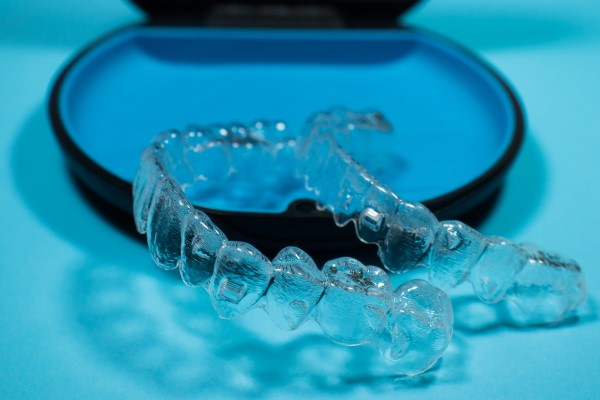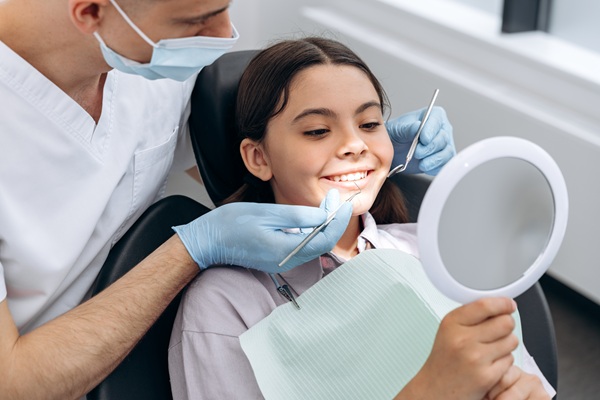Invisalign® Services: General Dentist or Orthodontist?

Invisalign® has become a popular choice among adult and teenage patients. Unlike traditional methods of teeth straightening, Invisalign® offers patients an array of benefits, including an easy treatment process and flexibility.
One common question that comes up when considering teeth straightening is whether patients should visit an orthodontist or general dentist for treatment. Each patient is different, meaning that their needs may vary. However, there are typically a few guidelines that patients can refer to when considering Invisalign®.
Invisalign®
Outlined below is the treatment process of Invisalign®, as well as a brief overview of the dental professionals who offer it.
The treatment process
Invisalign® is a type of clear aligners used to address misalignments with the teeth or bite issues with the jaw. They are removable aligner pieces that go directly over the top or bottom arch. If both arches require correction, then the patient will wear two aligners at a time.
Invisalign® is a unique option for teeth straightening because the treatment progress relies heavily on the patient's discipline. Because the aligners are removable, it can be easy to take them out and forget about them. However, in order for progress to be made, patients must wear their aligners for at least 22 hours each day. Throughout the course of treatment, patients will visit their dentist or orthodontist every few weeks for adjustments, which consists of switching out the old aligner for a new one. Additionally, the progress will be monitored to ensure that everything is on track.
General dentist
Invisalign® treatment typically begins at a general dentist's office. Most patients visit a general dentist for a recommendation and evaluation to determine if Invisalign® is even an option because some patients are not good candidates. If the patient does turn out to be a good candidate, the general dentist may start treatment right away. However, not all practices offer Invisalign®, which is when the dentist may refer the patient out to an orthodontist.
In some scenarios, patients may prefer to visit an orthodontist for Invisalign® treatment because their sole focus is correcting misalignments. However, one benefit of undergoing treatment at a general dentist's office is that routine cleanings can still take place at the same practice, making it more convenient. General dentists can monitor the patient's oral health while administering Invisalign® treatment, which can be advantageous for patients who have oral health concerns.
Orthodontist
If the patient is referred out to an orthodontist for Invisalign® treatment, then they will likely need to visit their general dentist at the same time. Additionally, if the patient prefers to visit an orthodontist for treatment, then they should expect to also see their general dentist regularly for routine care.
Orthodontists are great resources to make use of when undergoing teeth straightening treatment. They specialize in correcting misalignments in the teeth and jaw, which makes them experts at administering Invisalign®.
Get started today!
Interested in undergoing the Invisalign® treatment process? Working with a general dentist to begin the process is the best place to start. Reach out today to get started or to learn more about Invisalign®.
Are you considering Invisalign® in the Glendale area? Get more information at https://clarisseatakhaniandds.com.
Check out what others are saying about our dental services on Yelp: Invisalign in Glendale, CA.
Recent Posts
For a discreet way to fix poor teeth alignment, many patients choose the Invisalign® system. Before clear aligners like these were introduced, many adults would leave teeth alignment issues unfixed since treatment required them to have highly visible metal braces in their mouth for up to two years. Thanks to Invisalign, patients can now improve…
Invisalign® has quickly become one of the most preferred ways to undergo orthodontic treatment, especially for teenagers and adults. Invisalign® offers benefits that cannot be achieved with other treatment methods, which is why general dentists are recommending it as a preferred method. Continue reading to find out more.Below is a quick overview of Invisalign® and why…
Understanding the pros and cons of Invisalign® and veneers is an important first step to deciding which treatment option is right for you. Many are familiar with Invisalign for a straighter smile, but fewer have heard of veneers for orthodontic treatment. This review offers insights into Invisalign and veneers as it relates to correcting teeth…
Invisalign® is a popular way to straighten teeth that are crooked, crowded, or gapped. Additionally, it is a good option for very minor bite issues, such as over or underbites. However, more involved orthodontic problems may require alternative treatments. Thankfully, the Invisalign® technology has improved over the years, which has allowed for the treatment to be…


